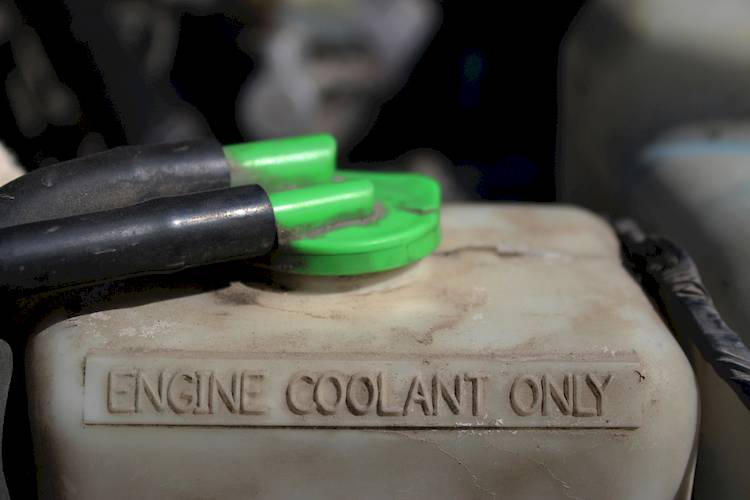

The coolant recovery reservoir is both an expansion tank as well as a coolant recovery tank. In modern vehicles, the radiator has no cap so it has no upper tank for expansion. The coolant recovery reservoir takes this place, and any coolant that escapes from the radiator due to pressure will flow through a discharge tube and into the recovery reservoir.
The coolant recovery tank is made of white plastic and located near the radiator. You will be able to see how much fluid is inside of the reservoir. It is important to maintain the reservoir so the fluid does not go past the highest part when the engine is operating. This means the engine is running too hot, and the coolant recovery reservoir is full.
If you engine does start to overheat, it is important to note that you should not remove the coolant recovery reservoir cap or the radiator cap. After you stop and you turn your vehicle off, you should wait at least 20 minutes before opening the cap. Otherwise, the pressurized fluid in the tank can spray out and burn you.
The coolant recovery reservoir levels should be inspected about once a month. These can be prone to leaking over time, so while inspecting the reservoir, check for leaks in the hoses, radiator, water pump, and the coolant recovery reservoir itself. In addition, check the reservoir tank for debris or sediment. This can clog the pressure relief valve in the radiator cap and shorten the lifespan of the coolant recovery reservoir. These are serious problems which can harm your vehicle greatly. Have a professional mechanic inspect and replace the coolant recovery reservoir in your vehicle if it is said to be the problem.
Since the coolant recovery reservoir can go bad over time, it is important to know the symptoms it gives off before it needs to be replaced.
Signs the coolant recovery reservoir needs to be replaced include:
- There is coolant leaking and a puddle underneath the vehicle
- The coolant light is on
- The temperature gauge is reading high
- Your vehicle is constantly overheating
- You smell something sweet while your vehicle is running
- Steam is coming out from under the hood
As soon as you notice a problem with your reservoir, have it repaired right away to keep your vehicle in optimal working condition.



